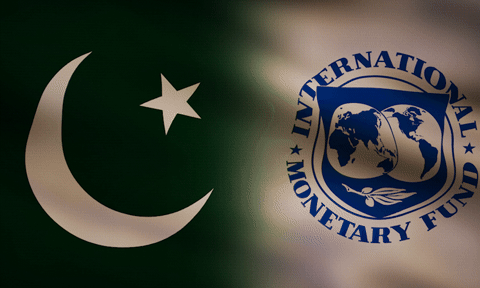Over the last two years, Pakistan’s formal sector has witnessed the most dramatic contraction in its history. If the decline in LSM isn’t proof enough, then look no further than the state of banking credit to private sector businesses. According to the latest statistics from the SBP, the needle has barely moved on credit offtake to private sector businesses for the past 18 months, still stuck below its peak of Dec 2022.

That private sector offtake has come to a standstill amidst a historic markup rate probably comes as little surprise to most observers. But here is the kicker: in real terms (when adjusted for inflation) outstanding bank loans to private sector businesses are at their lowest level in a decade, indicating a contraction in the overall size of commercial activity in the formal private sector.

On the surface, it appears that the contraction in the bank sector’s advances to the private sector has hurt firms in the corporate sector far more severely than the SME businesses. In fact, credit to SME businesses already seems to be in recovery, even as monetary contraction continues at full pace. But that may be an outcome of a sleight of hand. Every year, commercial banks re-classify their funded assets portfolio in light of inflation, with many firms, businesses, and sponsor groups previously rated as ‘corporate’ or ‘large-scale’ falling through the cracks based either on their annual turnover or equity position, re-classified as commercial, middle-market or SME, as a result. At the time of this writing, any firm with an annual turnover below Rs7.5 billion is probably no longer part of corporate banking groups with most banks (although exact definition and classification may vary from to bank, and exceptions may exist based on sponsor group relationship).


Thus, the rise in credit to SMEs exactly as corporate debt falls – especially around book closing periods – June and Dec – is most likely indicative of portfolio re-classification, rather than any substantive growth in credit offtake to SME firms. This is further corroborated by the fact that SME credit outstanding falls right after recording one-off jumps on the financial-year close, indicating that total SME loans outstanding are winding down, just like advances to the corporate sector.

But true developments of substance are taking place on the pricing front. Although overall credit offtake to private sector firms is definitely in contraction, the nature and quality of lending is changing, and fast. Although the concessional credit portfolio has wound down by Rs200 Bn over the past 2 years, loans advanced on commercial terms (or pricing) have risen by Rs700 Bn during the same period, suggestive of net growth in private sector advances after taking into account winding off of the concessional credit bonanza. Private sector credit advanced is rising slowly, but this time on commercial terms and possibly on stronger footing.

The fact that this recovery began long before the interest rate had started to come down offers hope that the next cycle of monetary easing will probably be built on stronger foundations than the last one. With the door to concessional finance permanently shut (it is hoped) banks will now make sound risk-rated decisions in private-sector lending, and not try to jump-start a recovery on steroids by injecting artificial liquidity into the system.

It will be a long time before Pakistan’s formal private sector recovers from the shock therapy of the last two years. But with the hard phase of contraction now behind us, one hopes that the economic recovery will be built on solid foundations this time around.





















Comments
Comments are closed.